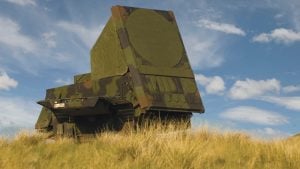A recent class on Analytical Geometry – 2D was conducted as part of the preparation for the National Defence Academy and Naval Academy (NDA-NA) Exam – Paper I – Maths. The session focused on the important topic of Conic Sections, with a particular emphasis on Parabola, Ellipse, and Hyperbola. These three curves form a major part of geometry problems in competitive exams and have significant applications in both theoretical and practical mathematics.
In this blog, we will provide an overview of the class, discuss key concepts such as eccentricity and the terms associated with these conic sections, and share strategies to help candidates effectively prepare for these topics in the NDA-NA exam.
Overview of the Class: Conic Sections – Parabola, Ellipse, and Hyperbola
The class began with a general introduction to Conic Sections, which are curves obtained by intersecting a plane with a cone. Depending on the angle at which the plane cuts through the cone, various shapes are formed, including the Parabola, Ellipse, and Hyperbola. These curves have distinct properties, each with its own set of geometric characteristics, equations, and applications.
The instructor emphasized the importance of these curves in the NDA-NA exam, where students are often tested on their understanding of the various properties of conic sections and how to apply these properties in solving geometry problems.
1. Understanding Eccentricity
A major focus of the class was on the concept of eccentricity. Eccentricity is a measure of how much a conic section deviates from being circular. Each conic section has its own specific range of eccentricity:
- For a parabola, the eccentricity is always 1.
- For an ellipse, the eccentricity lies between 0 and 1.
- For a hyperbola, the eccentricity is greater than 1.
Understanding eccentricity is crucial, as it helps in distinguishing between these curves and understanding their geometric behavior. The class delved into how eccentricity affects the shape of each conic section and how it can be calculated from the standard form of the conic equation.
2. Parabola: Key Features and Terms
The parabola was the first curve discussed in detail. A parabola is a symmetrical, open curve, and its defining characteristic is that every point on the parabola is equidistant from a fixed point called the focus and a fixed line called the directrix.
Key terms associated with the parabola include:
- Focus: The point from which distances to the parabola are measured.
- Directrix: The line that helps define the curve’s shape.
- Axis of symmetry: The line that divides the parabola into two equal halves.
- Vertex: The point where the parabola changes direction..
3. Ellipse: Key Features and Terms
Next, the discussion moved to the ellipse, a closed curve that resembles an elongated circle. An ellipse has two focal points, called foci, and the sum of the distances from any point on the ellipse to the two foci is always constant.
Key terms associated with the ellipse include:
- Major axis: The longest diameter of the ellipse, passing through both foci.
- Minor axis: The shortest diameter, perpendicular to the major axis.
- Foci: The two fixed points used to define the curve.
- Center: The midpoint of the major and minor axes.
4. Hyperbola: Key Features and Terms
The final curve discussed in the session was the hyperbola, which consists of two separate branches. Like the ellipse, a hyperbola also has two foci, but the difference in the distances from any point on the hyperbola to the two foci is constant.
Key terms associated with the hyperbola include:
- Foci: The two points used to define the curve.
- Vertices: The points where the hyperbola crosses the axis of symmetry.
- Transverse and conjugate axes: The axes that define the orientation of the hyperbola.
Strategies to Prepare for Conic Sections in NDA-NA Exam
Preparation for conic sections requires a clear understanding of the geometric properties of these curves, as well as the ability to apply these properties in problem-solving. Below are some strategies discussed during the class that can help students prepare for this topic effectively:
1. Build a Strong Foundation with Basic Concepts
Before tackling more complex problems, ensure that you have a solid grasp of the basic properties of each conic section—parabola, ellipse, and hyperbola. Familiarize yourself with key terms such as focus, directrix, axis, eccentricity, and the equations associated with each curve. Understanding the basic definitions will make it easier to solve problems.
2. Practice Visualizing the Curves
Visualizing the geometric shapes of conic sections is essential for understanding how they behave in different scenarios. Draw diagrams of parabolas, ellipses, and hyperbolas to help you comprehend their properties better. This will also help in solving geometry questions that require you to interpret or sketch these curves.
3. Solve Previous Years’ MCQs
As with any competitive exam, practicing previous years’ questions is a must. Solving MCQs related to conic sections will help you become familiar with the types of questions asked in the NDA-NA exam and will also improve your speed and accuracy. Focus on problems that involve finding eccentricity, calculating distances, and working with the equations of conic sections.
4. Understand the Application of Conic Sections
Many questions in the NDA-NA exam require the application of conic sections in real-life scenarios. For example, you may be asked to find the trajectory of a projectile (parabola) or to solve problems related to planetary orbits (ellipse). Understanding the practical applications of conic sections will give you a deeper insight into how these curves work and make it easier to answer such questions.
5. Use Diagrams and Visual Aids
When solving geometry problems, always try to draw diagrams. This will help you visualize the problem better and make it easier to solve. For example, when dealing with hyperbolas, sketching the asymptotes and the branches of the curve can help you see the relationship between the points and the foci more clearly.
6. Focus on Important Properties and Theorems
There are several important properties and theorems related to conic sections that frequently appear in exams. Make sure you are familiar with the key theorems, such as the reflective property of parabolas, the sum of distances for ellipses, and the relationship between the asymptotes and the hyperbola. These properties can often provide shortcuts to solving problems quickly.
Conclusion
The recent class on Analytical Geometry – 2D provided a comprehensive overview of Conic Sections, with a special focus on Parabola, Ellipse, and Hyperbola. The discussion covered important concepts such as eccentricity, foci, directrix, and various terms associated with each curve, along with their applications in real-life scenarios.
To effectively prepare for the NDA-NA exam, students must build a strong understanding of the basic properties of conic sections and practice solving MCQs related to these topics. By focusing on visualization, understanding geometric relationships, and mastering key theorems, students can enhance their problem-solving skills and improve their chances of success in the exam.
By following the strategies discussed in this blog, candidates can confidently approach questions on Conic Sections and perform well in the geometry portion of the NDA-NA Maths Paper.



















